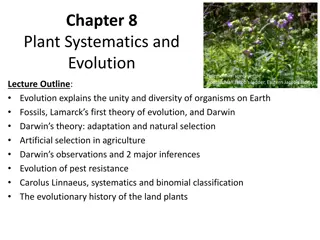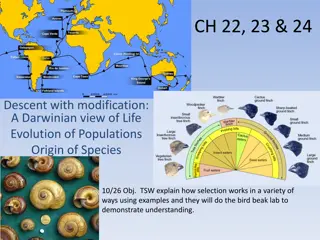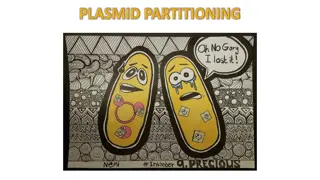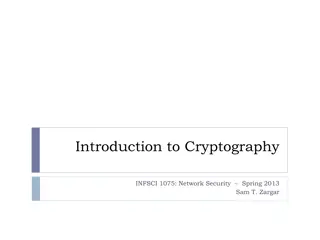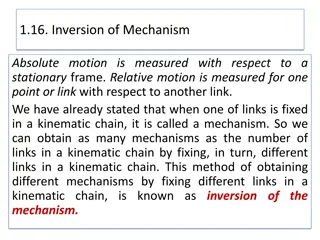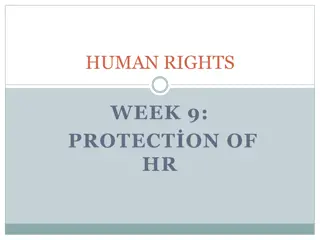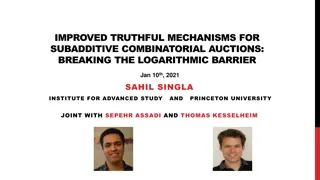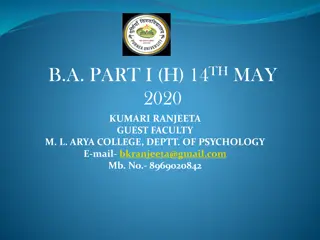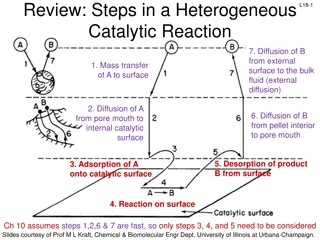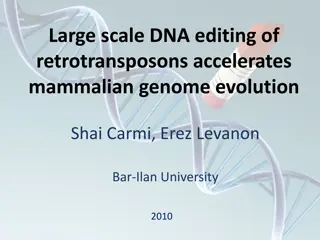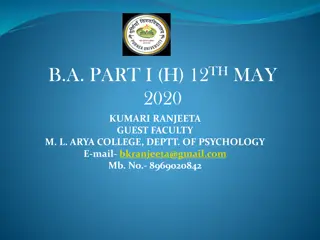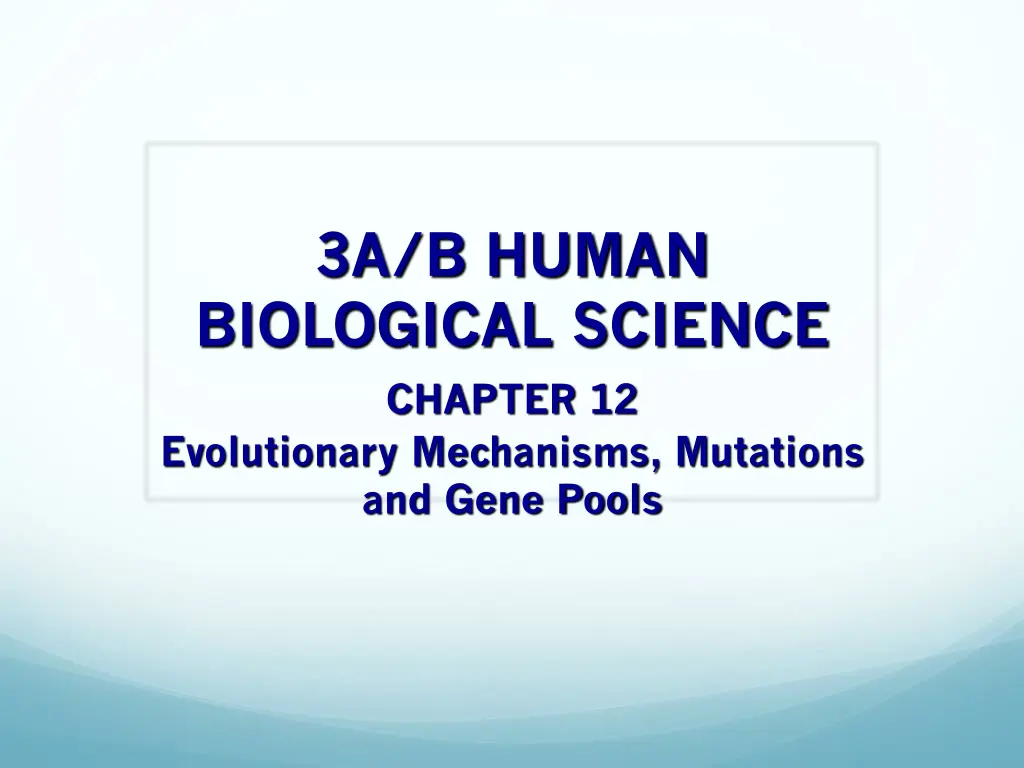
Understanding Population Genetics and Evolutionary Mechanisms
Explore the fascinating world of population genetics, evolutionary mechanisms, mutations, gene pools, and natural selection. Learn how allele frequencies change, the impact of mutations, and the role of random genetic drift in shaping genetic diversity within populations.
Download Presentation

Please find below an Image/Link to download the presentation.
The content on the website is provided AS IS for your information and personal use only. It may not be sold, licensed, or shared on other websites without obtaining consent from the author. If you encounter any issues during the download, it is possible that the publisher has removed the file from their server.
You are allowed to download the files provided on this website for personal or commercial use, subject to the condition that they are used lawfully. All files are the property of their respective owners.
The content on the website is provided AS IS for your information and personal use only. It may not be sold, licensed, or shared on other websites without obtaining consent from the author.
E N D
Presentation Transcript
3A/B HUMAN BIOLOGICAL SCIENCE CHAPTER 12 Evolutionary Mechanisms, Mutations and Gene Pools
Population Genetics A species can be defined as a group of organisms that share many characteristics and are able to interbreed under natural conditions to produce fertile offspring. A population is a group of organisms of the same species living in a particular place at a particular time. When studying populations, geneticists prefer to consider the characteristics of the population as a whole and not those of individuals that make up the population. Gene pool = the pooling of the genotypes of all the individuals capable of breeding in a population. (This is where we consider all the genes that could possibly be expressed in a population.) Allele frequencies = how often each allele of a particular gene is expressed in a population (e.g. brown eyes vs. blue eyes)
Changes to Allele Frequencies
Mutations New variations may occur suddenly by chance. This is known as a mutation. There are two types of mutations: 1. Gene mutations which are changes to the DNA of a single gene. 2. Chromosomal mutations which are changes to a whole or part of a chromosome. Mutations may occur in two places: 1. Body cells, known as somatic mutations. 2. Gametes, known as germline or germinal mutations.
Natural Selection When nature causes members of a populations with one set of alleles to survive at the expense of members of the population that do not possess that set of alleles, natural selection is operating. We would then suggest that those with the favoured alleles in the population possessed a survival advantage or a selective advantage. The set of alleles that allows individuals to survive is described as selectively advantageous.
Random Genetic Drift (Sewall-Wright Effect) Random genetic drift operates in small isolated populations to cause random alleles to change in a population so that allele frequencies change without the influence of natural selection. In this case allele frequencies change for no apparent reason; there was no selective advantage for the appearance of one gene over another; the gene frequencies simply change. For example indigenous aboriginals on the islands of Bentinck and Mornington have high proportions of the IB allele and an absence of the IA allele while on the mainland the aboriginal population has a low proportion of the IB allele and a high proportion of the IA allele.
Random genetic drift can be visualized as occurring like the following: A small population representative of the large population moves away and becomes immersed in another large population. Within the second large population, the small population remains isolated because of religious, cultural, or socio-economic barriers. Isolated within the second large population, the small population experiences random genetic change the frequencies of certain random genes become greater or smaller for no apparent reason without the action of the forces of natural selection. This genetic change is transmitted throughout the small population quite easily because of the isolation the population experiences. The isolation means that there is no interbreeding with members of the larger surrounding population. (Example: The Dunkers from Hesse in Germany moving to Pennsylvania, U.S.A.)
The founder effect is a form of random genetic drift. This is the situation where an isolated population has already experienced random change in the allele frequencies that results in this small isolated population being genetically different to the surrounding larger population. These people then leave their larger surrounding population for one reason or another, and settle elsewhere, having brought with them a distinctly different gene pool. This gene pool remains isolated from other gene pools, or interbreeding only occurs with other small populations and so it retains many of the characteristics of the original founders of the group. For example, Pitcairn island was populated in 1790 by nine mutineers from the HMS Bounty and eighteen Polynesians. The descendants of these individuals show less genetic diversity than the original inhabitants.
It differs from random genetic drift in that the original small population, because it is small, is notgenetically representative of the original population. This small population generally shows features that are not typical of the original homeland population, but these features have appeared randomly, by chance without the forces of natural selection. They possess a difference in their appearance or genetic makeup that is not seen in the general population (e.g. a noticeable height difference, difference in build, or maybe even blood type). This small population then leaves the original large population and begins a new population (and may mix with other small groups creating a single new population) http://www.youtube.com/watch?v=Q6JEA2olNts https://www.youtube.com/watch?v=mjQ_yN5znyk
Population Bottlenecks Population bottlenecks occur where a natural disaster wipes out a large percentage of the population, leaving a much smaller population. The new smaller population lacks the genetic diversity of the original large population. The new population procreates and increases in size, but the gene pool is significantly different. Because of its small size, some different characteristics randomly appear more frequently in the population than in the original large population.
Migration Migration is the gene flow from one population to another. Therefore the frequency of alleles will be altered. Populations are often kept apart by barriers that inhibit interbreeding. These barriers may be either geographical barriers such as oceans, mountain ranges, lake systems, deserts and expansive ice sheets or sociocultural barriers such as economic status, religion, language, educational background, social position. If two populations are kept isolated they may have different characteristics as the environmental pressures will be different.
Genetic Diseases Genetic diseases also result in changes to allele frequencies. It would be expected that an allele causing an inherited, fatal disease would be expected to gradually be eliminated from a population. Sometimes alleles that cause disease persist in populations. This is especially true if two of the alleles are needed to cause the disease, but being heterozygous is advantageous.
Example 1 If a person is homozygous for Tay-Sachs disease an enzyme is not produced resulting in the accumulation of fatty deposits on the nervous system. Death occurs by age 5. If a person is heterozygous for Tay-Sachs disease have an increased resistance to tuberculosis. These individuals are more likely to survive in situations where tuberculosis occurs, and pass on the Tay-Sachs allele to their offspring. This allele is most frequent in individuals of Jewish descent from eastern Europe.
Example 2 If a person is homozygous for sickle-cell anaemia their red blood cells end up being sickle-shaped and they do not carry as much oxygen as a regular RBC. This disease is usually fatal. If a person is heterozygous they show no ill effects, unless oxygen is in short supply. However they have some immunity to malaria and are more likely to survive in an area with malaria. Therefore this allele will be passed on to their offspring. Sickle cell anaemia is most frequent in Africans from the tropical areas in Africa.
Natural selection Until 1800 s it was widely believed that each species was created by God. The theory of evolution by natural selection was proposed independently by Charles Darwin and Alfred Russell Wallace in 1858.
Darwins theory of natural selection was based upon three observations: Variation Darwin noted that all members of a species vary characteristics are passed on from parents to their offspring. Birth rate All living organisms increase their numbers at a rate far greater than their available food supply and other resources increase. Nature s balance Darwin observed that each species tended to maintain its numbers at a relatively constant level.
These gave rise to three interpretations: 1. Competition for resources implies a struggle for existence those with characteristics best suited to the environment survive. 2. Darwin called the ability to survive this competition survival of the fittest. 3. Survival of the fittest is possible because there is variation within any species the differences between organisms allows some to survive and others to perish. Today natural selection can be viewed as the selection of those alleles in a population that give and organism a greater survival advantage.
Natural selection in human populations Human populations show a great range of genetic variations. In the past, those more biologically fit survived and passed on their favourable characteristics to their offspring. This does not have the same significance today as it did in the past because medical expertise and technological skill help many of the biologically weak members of our society to survive. The features possessed by the different varieties of humans at one time gave them a survival advantage.
Human body shape, or stature, can be correlated with resistance to the cold. People living in extreme cold tend to be short with long trunks and short limbs. This shape appears to conserve as much heat as possible. Their broadly built faces and Mongolian (epicanthic) eye folds seem to be adaptations to protect their face and eyes from exposure to the cold. Eg Inuits.
People populating regions where temperatures are very high tend to have short bodies with long limbs. This shape facilitates the loss of heat, as the surface of the body is much greater when compared to body volume than it is for people with long bodies and short limbs. E.g. Sudanese, Ethiopians, Zulus
Outline changes that have occurred in the Eskimo and African body shapes, assuming they came from the same gene pool. Inuit (Eskimo) individuals with long bodies and short limbs possess a survival advantage (sometimes referred to as a selective advantage) in cold climates. Those with short bodies and long limbs would have found survival more difficult, or may not have survived at all. African individuals with short bodies and long limbs have a survival advantage in hot dry conditions. Those with long bodies and short limbs would not have survived.
Speciation In a situation where two populations are isolated for a long period of time, allowing changes to occur in the allele frequency of the two populations, the members of those populations become so different that even if they came together, interbreeding would be no longer possible. If this occurred the two populations would be regarded as separate species. This process is called speciation. Give examples of geographical barriers. Oceans, mountain ranges, large lake systems, deserts and expansive ice sheets.


